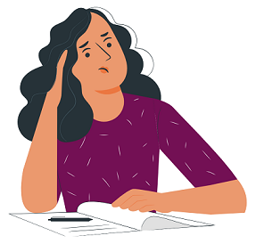Have your progress notes written for you automatically
Clinical supervision represents a crucial element of professional development in mental health fields. It is far more than a mere administrative requirement – it is a dynamic, collaborative process that intertwines professional skill enhancement, emotional support, and ethical accountability.
Clinical Supervision – Supervisory Relationships
Supervisory relationships are a complex blend of professional, education and therapeutic aspects (Geldard & Geldard, 2001, p.377). The supervisory relationship goes far beyond simple skill assessment. It acknowledges the profound emotional labor inherent in mental health work, offering a safe space for practitioners to process challenging client interactions. This supportive environment helps professionals recognize and manage personal triggers, supports emotional resilience, and prevents professional burnout while encouraging ongoing self-awareness and personal growth.
Ethical safeguarding emerges as a fundamental aspect of clinical supervision. The process ensures that client welfare remains paramount, offering mechanisms for ongoing ethical decision-making and creating accountability structures within professional practice. Professional bodies like the British Association for Counselling and Psychotherapy (BACP) and the American Psychological Association (APA) conceptualize supervision as a specialized mentoring process that is fundamentally transformative.
Practically, effective clinical supervision typically involves consistent and structured meetings with an experienced supervisor. These interactions include comprehensive case discussions, reflective analysis of therapeutic approaches, exploration of personal and professional dynamics (accounting for potential transference or countertransference), and skill-building opportunities. The meetings create a collaborative space where nuanced professional challenges can be examined with compassion.
Ultimately, clinical supervision transcends traditional training models. It represents a holistic approach to professional development, a collaborative journey of growth (not just for the supervisor but also the supervisor), introspection, and continuous learning that respects both the professional expertise and the human nature of mental health practice. Through this process, practitioners are supported in becoming not just competent professionals, but compassionate, self-aware practitioners who can provide exceptional care.
Who Needs Clinical Supervision?
In my limited experience, EVERYONE needs supervision, though what we need from it changes over time.
When I was fresh out of training, supervision was basically life support. I’d show up with a million questions about everything from “am I doing this right?” to “help, my client said something about suicide and I’m freaking out!” These days, I’m less panicky but still have plenty of “umm, what do I do now?” moments.
For newly qualified practitioners like me, clinical supervision supports the transition into independent practice. It helps us refine skills, build confidence, and handle complex cases with guidance. It also provides emotional support as we adjust to the realities of working with clients independently.
All supervisors also have their own supervisors. Even experienced professionals benefit from ongoing supervision. Regular supervisions help experienced practitioners maintain quality care, stay updated with evolving therapeutic techniques, see past their biases and engage in continuous professional development. It provides space for reflection on emotional responses, biases, and practice challenges that arise irrespective of how long you’ve been in the field.
What Happens in Supervision?
Each supervisor-supervisee relationship is different, but here is a general overview.
- Frequency – Meet every other week for an hour, and option to schedule emergency supervision if an emergency comes up
- Content – Discussing the cases – asking the supervisor if there are any questions or stuck points that you might be having. I usually bring 2-3 cases to discuss, prioritizing ones where I feel stuck or worried
- Emotional Aspect – There’s usually some time where I just vent about the emotional impact of the work.
More broadly, a supervisor’s role includes several key responsibilities:
- Providing ethical and professional guidance to ensure counsellors adhere to guidelines and maintain professional integrity
- Facilitating skill development and learning by offering insights into different counselling theories and practical techniques
- Providing emotional support and preventing burnout by creating a safe space to discuss challenging cases
- Enhancing accountability through case discussions and reflective practice
- Assisting with crisis management for high-risk client situations
- Monitoring professional growth and supporting long-term career development
Moreover, digital tools like Mentalyc can enhance this process by streamlining note taking, tracking case progress, and ensuring structured documentation to be used in supervision session.
Types of Supervision
One-on-One
This is my primary supervision format. Just me and my supervisor, focused entirely on my cases and development. It feels safer to be vulnerable about my mistakes and insecurities in this setting. I still remember admitting that I had completely mishandled a client’s disclosure because I was caught off guard. Wouldn’t have felt comfortable sharing that in a group!
From a professional standpoint, one-on-one supervision is considered the most traditional format. It allows for in-depth discussions, personalized feedback, and focused guidance tailored to the specific challenges faced by the counsellor.
Group Supervision
I was super skeptical about group supervision – why would I want peers critiquing my work? I thought it would impact my confidence. But it’s actually been amazing to hear different perspectives on cases.
Last month someone suggested an intervention for my anxious teenage client that I never would have thought of – and it worked brilliantly! Plus, there’s something reassuring about hearing that other counselors struggle with the same things I do. Makes me feel less alone in this sometimes isolating work.
Group supervision offers unique benefits that might not be available in the more traditional supervision modalities: shared learning experiences, exposure to diverse perspectives, and peer support. It creates a collaborative learning environment where counsellors benefit from each other’s experiences and feedback.
Peer Check-ins
Not formal supervision exactly, but I have 2 colleagues I meet with over video call once in a while to check in about work. Sometimes we discuss cases (keeping everything anonymous), but mostly we talk about the emotional impact of the work. These informal connections help me process the day-to-day stuff that might not warrant bringing to formal supervision but still needs somewhere to go!
While such a setup lacks the expertise of a senior practitioner, it provides valuable opportunities to exchange insights, discuss cases, and develop reflective practice skills in a supportive setting.
Other formal types of supervision I haven’t personally experienced but are important to acknowledge include:
- Managerial supervision, typically provided within organizational settings and focused on compliance with policies and institutional goals
- Clinical supervision, focused specifically on enhancing therapeutic skills and ensuring ethical practice through deep exploration of casework
How Supervision Helps
It is more than a requirement to meet ethical standards, it truly becomes a support system for therapists. The field of mental health is emotionally taxing and involves continuous personal checks through reflection. In this way, supervision really aids the therapists growth.
Preventing Critical Mistakes and Ensuring Ethical Practice
Consider a counselor working with a client expressing suicidal ideation for the first time. Without proper guidance, the practitioner might feel overwhelmed by the intensity of the situation. Supervision provides a critical pathway for developing appropriate response protocols.
Professional literature consistently demonstrates that such supervision interventions are crucial for quality assurance, helping counselors navigate complex ethical landscapes and implement evidence-based interventions.
Setting Boundaries
A typical scenario involves a young therapist who begins to feel increasingly overwhelmed by client communications. During a supervision session, it becomes apparent that the counselor has been responding to client emails at all hours, blurring professional boundaries and risking personal burnout.
The supervisor might guide the practitioner through:
- Establishing clear communication protocols
- Creating structured response times
- Developing strategies for maintaining professional distance
- Understanding the importance of self-preservation in therapeutic work
This boundary-setting process is critical for maintaining both professional effectiveness and personal well-being, particularly for early-career mental health professionals.
Preventing Burnout
About 8 months in, I hit a wall. Every client’s problems felt overwhelming, I was dreaming about work, and I started dreading sessions. My supervisor recognized the burnout signs before I did and helped me implement better self-care practices. She also normalized that this happens to EVERYONE, which made me feel less like a failure.
Let us take an instance – A mental health counselor working in a trauma center provides an excellent example of potential burnout risks. After months of intense work with survivors of complex trauma, the counselor begins to experience:
- Emotional exhaustion
- Decreased empathy
- Intrusive thoughts about clients’ experiences
- Difficulty maintaining professional objectivity
Supervision becomes a crucial intervention. Through guided reflection, the counselor learns:
- Self-care strategies specific to trauma work
- Techniques for emotional regulation
- Methods for processing secondary traumatic stress
- Importance of professional support networks
Enhancing Clinical Competence
The feedback I’ve received in supervision has directly improved my work. For instance, I had no idea I was avoiding silence until my supervisor pointed it out. Now I’m much more comfortable sitting in those quiet moments with clients, which often leads to their deepest insights.
Through targeted feedback, a counselor can learn to:
- Recognize the value of therapeutic silence
- Understand non-verbal communication
- Allow clients more space for self-reflection
- Develop more nuanced listening skills
Mentalyc offers AI-powered tool that can enhance the quality of your supervision notes. Therapists can invite their supervisor or supervisee, manage workflow efficiently, generate supervision notes and share notes with supervisor or supervisee.
Conclusion
Beyond the requirements, I have found that good supervision is about finding someone who gets you and the work you’re doing, who challenges you without shaming you, and who helps you become not just a better counselor but a more self-aware human.
The ability to differentiate between my personal self and professional self has been one of the greatest gifts of supervision. It’s helped me see when I’m bringing my own stuff into the room and when I’m responding to what the client truly needs. If you’re just starting out – prioritize finding good supervision above almost everything else. And if you’ve been at this a while, maybe this is your reminder to reflect on whether your current supervision is truly serving you and your clients.







